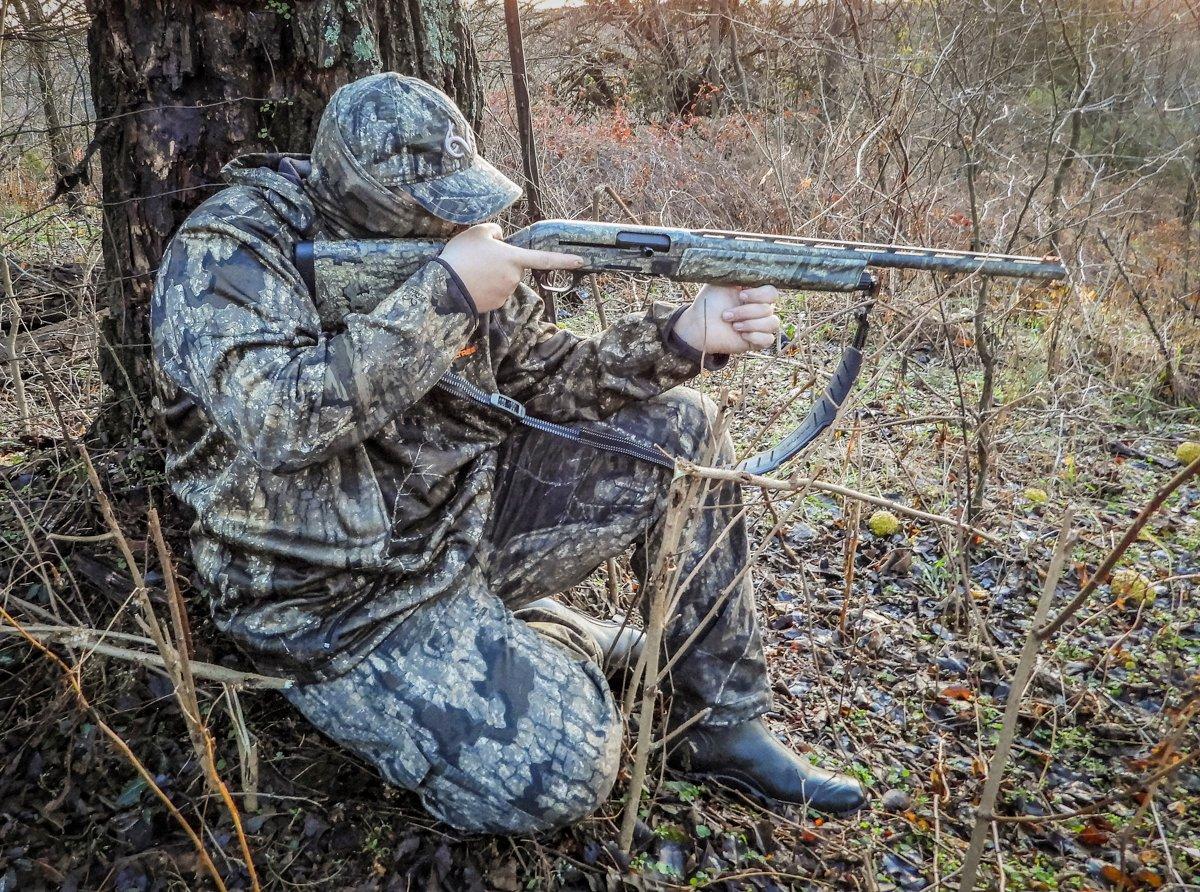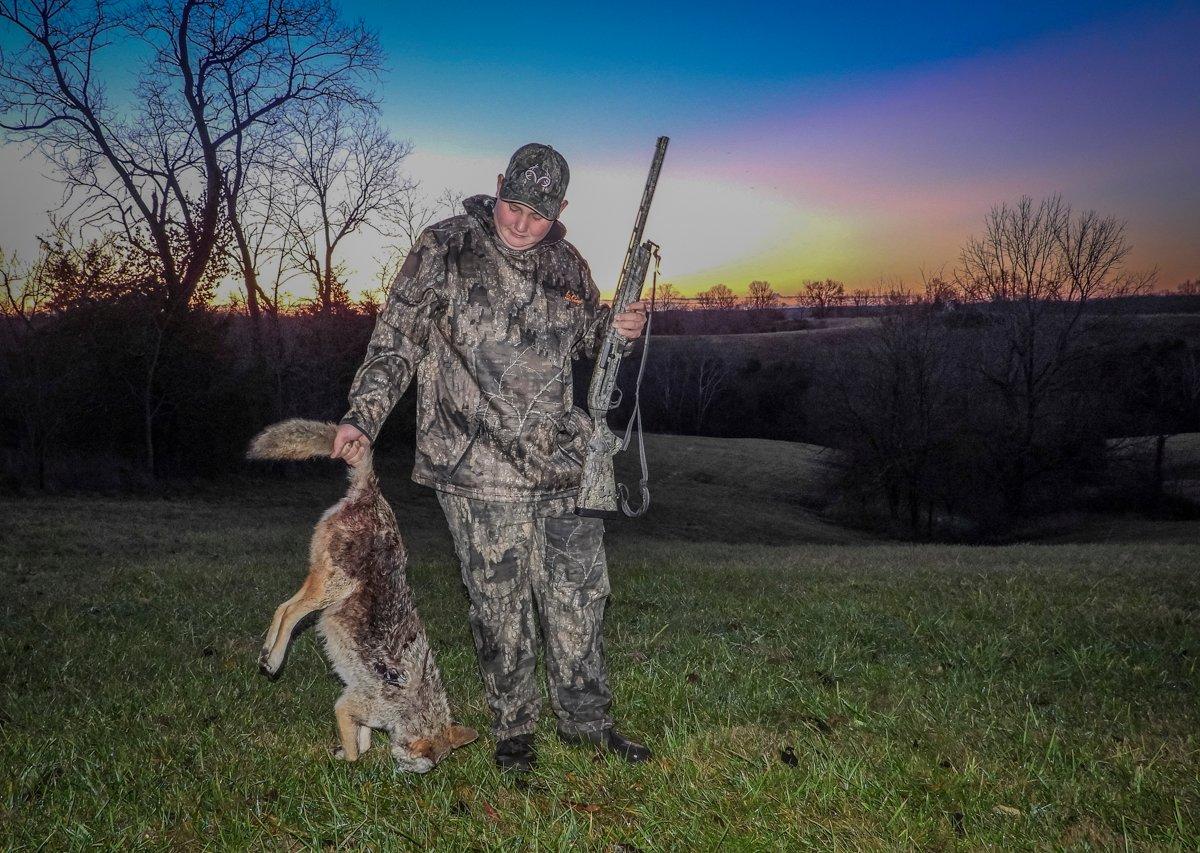Nothing beats a scattergun when calling predators in tight thickets
All we could do was stare at each other. My youngest son and I had set up at the top of a narrow, brushy draw that ran through the center of a picked bean field. Our plan was to hit the call and hopefully catch a coyote using the cover to slip toward us.
Our plan worked - too well. Seconds after we hit the call, a coyote burst from the cover just 20 yards below, heading straight at us and into the timber before we could even point our rifles in its general direction. He escaped unscathed.
Things can happen fast on a predator hunt. Since that one, I rarely head afield without taking a shotgun along. More than once, that shotgun has meant the difference between a dead coyote and an educated one.
So, what makes a good predator shotgun? It needs to be quick pointing, have plenty of knock-down power, and allow for swift follow-up shots in the event of a miss or multiple targets. If you hunt turkeys, chances are good you already have the perfect gun in your safe. Something like the Remington V3 Turkey Pro is a great option, and what I use on my own hunts. If you don't have one of your own, here's how to choose and set up your perfect predator gun.
Get a 12
While some predator hunters like to go big with a 10-gauge, the 12-gauge still rules. Smaller gauges struggle to keep larger shot for predators on target. Either 3- or 3 ½-inch loads work. Shorter barrels, like the V3 Turkey Pro's 22-inch tube, make maneuvering in heavy cover possible. Barrel lengths much longer than 26 inches can be unwieldy on close targets.
Shoot an Autoloader
I prefer a semi-auto platform for faster follow-up shots. Realtree pro staffer and predator hunting expert Byron South agrees. I always tell people to just plan on making a follow up shot every time, he says.
Pump guns can be hard to hold on target when you need a quick second or third shot, and double guns limit your number of shots. Coyotes are pack animals and often offer multiple close-range targets at once - so the more shots you have on hand, the better. If your state regulations allow, take a lesson from snow goose hunters and remove the plug from your gun.
Don't Over Choke
Unlike turkey hunting, where the tightest patterns rule, the big shot sizes and larger targets of predator hunting call for more open chokes. South says over-choking is one of the biggest problems he sees when hunters set up predator guns. He prefers modified or full tubes for a more even, open pattern.
Trying to shoot large shot sizes out of super-tight chokes can cause uneven patterns with big gaps between shot clusters. The perfect tube for your predator gun will give a uniform pattern over a 30-inch circle. Don't get hung up on the number of pellets in your target. The total count will depend on pellet size, with larger shot having fewer overall pellets in a load. Instead, look for 40 to 50% of your total pellet count on target to determine your maximum effective range.
Load Up
Coyotes and other predators are tough critters, often requiring multiple pellets in the vitals to bring them down. South says his favorite loads are No. 4 buck shot in lead loads, and T's in tungsten loads.
There are 41 pellets in a 3-inch load of No. 4 buck and 52 pellets in a 3-inch Tungsten T load, South says. Both of these loads give me plenty of shot on target and downrange energy.
With the increased popularity of predator hunting, many ammo manufacturers are now producing predator-specific loads. South says one of his favorites is the Hevi-Shot Dead Coyote shotshell.
Other good choices include Federal Premium No. 4 buck packed with 41 copper-plated shot in a tight patterning, buffered 3-inch load, Hornady's Heavy Magnum Coyote loads with 15 pellets of 00 buck in a 3-inch load for large shot fans, and Winchester's Varmint X loads with 75 copper-plated lead BBs in a 3-inch shell. The Winchester loads use the same Shot-Lok technology found in their Longbeard XR turkey loads. Shot-Lok encases the shot in a resin that holds the load together as it begins to travel down the barrel, then shatters to release the shot.
The results make for tighter and more even downrange patterns.
Dot or Bead?
Close-range predator hunting often happens fast. Think of flushing quail or dive-bombing teal. For that reason, South prefers open sights on his predator shotguns.
I like just a front bead, or open rear sights and a fiber front bead, he says. For me, scopes take too long and make it hard to pick up moving targets. I also do a lot of nighttime predator hunting, and open sights just work better for me when shooting with a light.
Predator hunting expert and Realtree Pro Mark Zepp agrees.
I tend to hunt some pretty thick cover, and shots can be more instinctual shooting than aiming, Zepp says. Plus, I often carry a lot of gear when I hunt, and I tend to be pretty rough on it at times. I don't want to take a chance on banging a scope against something and knocking off the zero.
If you do prefer an optic, both South and Zepp recommend looking at the wide-field-of-view red dot options that allow for quick target acquisition while still providing pinpoint aiming.
Keep it Close
How far can you ethically shoot a predator with a shotgun? That all depends on your gun and load. The only way to know for sure is to put in some range time.
You see and hear people all the time talking about taking 70-yard shots, South says. To me, with my setups, that just isn't ethical. You might get a lucky pellet in one at that range, but there is a lot of open space in your pattern that far out, and the pellets are losing energy fast. For me, I like to keep it inside 50 yards.
Once you have your gun set up, hit the range with several load and choke combinations. Draw some 30-inch circles with a 10-inch circle in the center for targets. Try different loads at different ranges and see what works for your gun. For the V3, we settled on 3-inch loads of lead No. 4 buck through a modified choke as the perfect balance of performance and value. I'm confident to 50 yards with this combination.
Whether you build a dedicated predator shotgun, or just outfit one of your existing turkey or waterfowl guns for some off-season practice, give shotguns a chance. The first time you call a coyote or other varmint into your lap and have to make a snap shot in seconds, you'll be glad you did.










